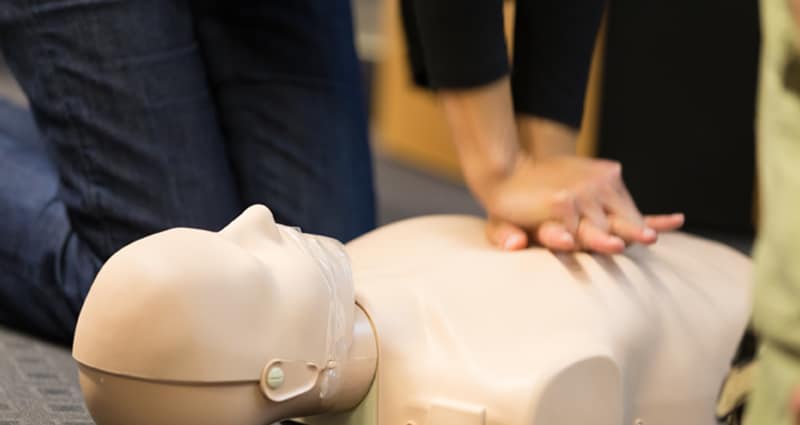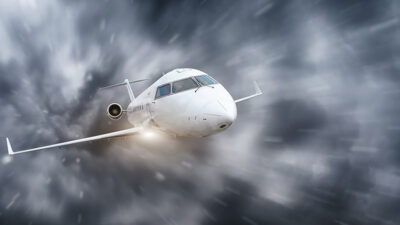CPR/AED Training: Frequent Refreshers are Critical

TELL ME AND I FORGET, TEACH ME AND I MAY REMEMBER, INVOLVE ME AND I LEARN.” – BENJAMIN FRANKLIN.
If someone collapsed in front of you in cardiac arrest, would you know what to do? When was the last time you took a CPR class or practiced your skills?
Recent research from the American Heart Association shows “the quality of rescuer education, and frequency of retraining are critical factors in improving the effectiveness of resuscitation. Ideally, retraining should not be limited to 2-year intervals. More frequent renewal of skills is needed.” Researchers agree practicing once every two years is not enough to remain competent and most research on the subject shows skills decline significantly after three months.
You can see how critical that information is for those who require CPR/AED certification for their job, but do not use the skills regularly. Typically, these people wait two years to refresh their knowledge at the time they renew their CPR cards.
Over the past decade, CPR instruction has evolved into a more complicated curriculum by incorporating the AED (automatic external defibrillator). The resuscitation algorithm now involves over two dozen steps and at least a dozen different skills.
Emergency responders and medical professionals are encouraged to complete refresher classes every three months if not using the technique on a regular basis. In many cases, alternatives to classroom training, like an eLearning skills refresher or a simulator, are suggested to keep your skillset intact. The maximum time between practice sessions should be no more than six months. However, it should be taken into account the individual’s experience and background when selecting a refresher interval.
Numerous studies have proven motor skills play a crucial role in all phases of the lifespan and the measurement of motor skills is one of the fundamental aspects of measuring human performance. Unfortunately, as we age we develop impairments in sensorimotor as well as cognitive and perceptual functioning. Later in life, we perform complex tasks more slowly and, in some cases, less accurately than we once did. Of course, the higher the complexity of the skill the steeper the learning curve.
In the field of resuscitation, researchers recently found “high-quality” CPR improves defibrillator shock success and boosts survival rates.
What is High-Quality CPR?
- 100 COMPRESSIONS PER MINUTE In 2015 the American Heart Association raised the standard rate to 100-120 chest compressions per minute or 2 per second.
- ALLOW FULL CHEST RECOIL Letting the chest come back to its natural resting position during compressions so the heart can refill.
- MINIMIZE INTERRUPTIONS of chest compressions and avoid excessive force if providing rescue breaths.
Every time the rescuer is off of the chest, there is no oxygenated blood flow to the brain and heart. Early defibrillation in the adult also increases chances of survival. For every minute the rescuer delays applying the AED the victim’s chances of survival drop 7 to 10 percent.
According to retention studies, skills decline rapidly over a few months. Responders to cardiac arrest need to be confident and competent in their abilities. Managers should provide the opportunity for crewmembers to practice their AED/CPR skills every three months.
Some examples include:
- Classroom environment with a skilled instructor
- Instructor-led practice session
- AED/CPR eLearning
Skills refresh courses should be highly interactive and require users to rehearse AED/CPR procedures in a variety of scenarios. Scheduling mock scenarios in your workplace after meetings or drills is a great way to build confidence within your team to assist without advanced preparation.
It is essential that crew members are not only properly trained in “high quality” CPR but trained at more frequent intervals. For more information please contact MedAire.

Flight departments around the world rely on MedAire, an International SOS company, to reduce their travel safety risks. Crews are trained on the resources to manage in-flight illness and injury with onboard medical equipment and telemedicine assistance. On the ground, passengers and crew have one resource for medical referrals; guaranteed payments for medical expenses; assistance with lost documents and prescriptions; online and e-mail travel advisories; evacuation support and a host of other services.
http://www.medaire.com/
© 2025 MedAire Worldwide. All Rights Reserved.
Next ArticleRelated Posts

Peer Support Programs: Transforming How Aviation Addresses Mental Health
While the industry has evolved in acknowledging these issues, stigma still impedes many from seeking available resources. Here, the significance of Peer Support Programs (PSPs) has been increasingly recognized. These initiatives offer a confidential haven where concerns can be openly discussed, free from judgment.

Understanding the Challenge of Turbulence-Related Injuries in Business Aviation
The challenge of managing air turbulence in business and private aviation is becoming increasingly evident due to the growing number of turbulence-related incidents affecting aircraft operators across the industry.

